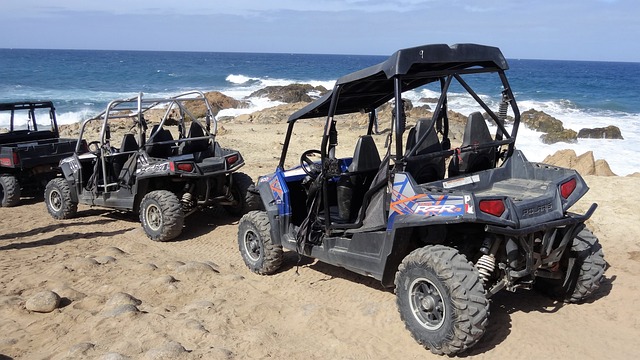Transporting classic cars across state lines requires understanding local regulations, using proper documentation like a Bill of Lading, and choosing reputable carriers specializing in antique vehicle shipping. The decision between open and enclosed carriers depends on the vehicle's condition, size, weight, and value. Thorough inspection, maintenance, and direct supervision during transit ensure safety. Special considerations for shipping motorcycles and ATVs include secure packaging and proper securing alongside classic cars to minimize risks.
Shipping a classic car across state lines can be an exciting yet intricate process. This comprehensive guide navigates the legalities and requirements, ensuring a smooth journey for your vintage vehicle. From understanding various shipping methods to tips on safe preparation, we cover everything you need to know. Whether you’re transporting a motorcycle or ATV, these insights will help ensure your classic car arrives in pristine condition. Dive into this essential resource for a hassle-free shipping experience.
- Understanding the Legalities and Requirements for Shipping Classic Cars
- Choosing the Right Shipping Method for Your Vintage Vehicle
- Tips for Safely Preparing and Accompaning Your Classic Car During Transit
Understanding the Legalities and Requirements for Shipping Classic Cars

When shipping classic cars across state lines, it’s crucial to understand the legalities and requirements involved. Different states have varying regulations regarding the transport of antique vehicles, so it’s essential to research and comply with local laws. This includes obtaining proper documentation, such as a Bill of Lading, which serves as a legal contract between the shipper and carrier, ensuring transparency and accountability throughout the shipping process. Additionally, specific requirements for shipping motorcycles and ATVs (All-Terrain Vehicles) may apply, including secure packaging to protect these vulnerable vehicles during transit.
Classic cars, given their historical significance and often delicate nature, require special handling. This involves selecting reputable carriers who specialize in transporting antique vehicles or have extensive experience with similar tasks. These professionals understand the unique challenges, like weight distribution, suspension considerations, and temperature control, that come with shipping classic cars safely over long distances. Adhering to these legalities and requirements ensures a smooth shipping process, preserving the integrity of your cherished classic car for its new destination.
Choosing the Right Shipping Method for Your Vintage Vehicle

When shipping a classic car across state lines, choosing the right method is crucial to ensure its safety and protect your investment. One popular option is open transport, ideal for visible inspection and accessibility during transit. However, enclosed carriers offer better protection from weather, road debris, and potential theft, making them suitable for more valuable or delicate vehicles.
Consider the nature of your vintage vehicle—its size, weight, and condition—when selecting a shipping method. For instance, if you’re shipping motorcycles or ATVs, enclosed carriers provide an additional layer of security and are specifically designed to accommodate these types of vehicles. Compare different shipping companies that specialize in both motorcars and off-road vehicles (like ATVs) to find the best fit for your specific needs and budget.
Tips for Safely Preparing and Accompaning Your Classic Car During Transit

When preparing your classic car for shipping, the first step is to ensure it’s in optimal condition. This includes a thorough inspection to identify and repair any existing damage or wear and tear. Remember that classic cars are often unique models with specialized parts, so have necessary tools and spare components readily available during the preparation process. Regular maintenance such as checking fluids, tires, brakes, lighting, and electrical systems is crucial to guarantee a safe journey.
Accompanying your classic car during transit can offer significant advantages. It allows for direct supervision, enabling you to address any unexpected issues promptly. Additionally, being present ensures that the vehicle is handled with care, preventing potential mishandling or damage. If shipping motorcycles and ATVs along with your classic car, secure them properly using appropriate straps and padding to avoid shifting during transit, minimizing the risk of collision or injury.
Shipping a classic car across state lines involves careful planning and understanding of legalities. By learning about the necessary documents, selecting appropriate shipping methods like those used for shipping motorcycles and ATVs, and properly preparing your vintage vehicle, you can ensure a smooth journey for your cherished classic. Remember to accompany your car during transit if possible, to maintain its integrity and authenticity throughout the process.
